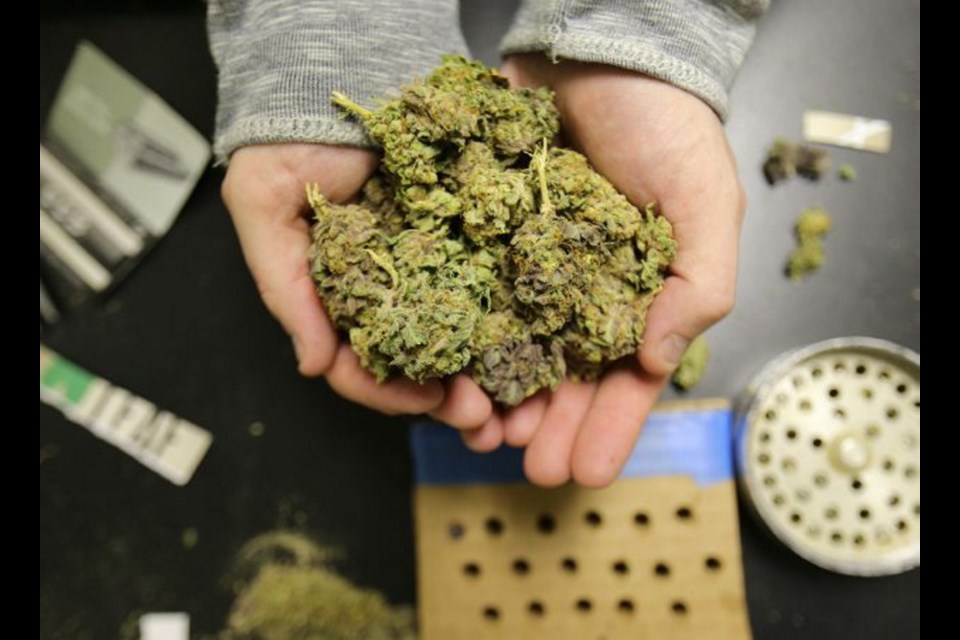VANCOUVER тАФ Travis Lane has been growing marijuana since high school, when his first pot plant swiftly withered and died in his bedroom closet. By the time he was 20, he had cultivated a small basement grow-operation.
Now in his mid-30s, Lane owns an online dispensary and runs two 390-plant operations on Vancouver Island. He employs two growers and raises his plants without pesticides or liquid fertilizer.
тАЬI donтАЩt want to hide what I do. IтАЩm good at what I do. IтАЩm proud of being good at what I do,тАЭ he said. тАЬIтАЩve been proactive my whole life in trying to move toward a time where I can openly be a cannabis professional.тАЭ
Lane holds two Health sa╣·╝╩┤л├╜ licences for the grow sites, making his pot production legal for medical purposes. But with the federal government committed to legalizing cannabis for recreational use, Lane is among the smaller-scale growers fighting for a seat at the table.
The government is still in the early stages of developing the legislation it plans to introduce next spring. Those behind a budding тАЬcraft cannabisтАЭ movement warn, however, that if the law favours large-scale commercial producers, then jobs and potential tourism revenues will be lost and the black market will continue to thrive.
тАЬItтАЩs going to be the National Energy Program all over again, but instead of Alberta and oil, itтАЩs going to be sa╣·╝╩┤л├╜ and cannabis,тАЭ said Ian Dawkins of the Cannabis Growers of sa╣·╝╩┤л├╜, referring to the 1980 policy that infuriated Albertans when the federal government tried to gain more control over the oil industry.
тАЬYouтАЩre talking about economic activity that has sustained communities that have been devastated by the loss of primary industries.тАЭ
His group, a national trade association representing small and medium-sized pot growers and vendors, recently commissioned a report on sa╣·╝╩┤л├╜тАЩs cannabis industry. Economist Larissa Flister used Colorado, a similarly sized state with legal pot, as a proxy to estimate that about 13,700 people have marijuana-related jobs in sa╣·╝╩┤л├╜
ItтАЩs a rough figure thatтАЩs impossible to verify due to the illegality of the jobs, but several estimates have pegged the value of sa╣·╝╩┤л├╜тАЩs pot industry at between $2 billion and $7 billion. Advocates say they are fighting to ensure that legalization recognizes those workers, rather than pushing them further underground.
Dawkins pointed to the federal governmentтАЩs cautious tone, and intense lobbying by large licensed producers, pharmacies and liquor stores, as signs the government could be headed toward a strict regime without space for smaller growers or dispensaries.
тАЬIf youтАЩre selling cannabis in a liquor store, in this tightly controlled regulatory environment, youтАЩre not creating tourism. There was no winery tourism in sa╣·╝╩┤л├╜ until they began to de-regulate the winery sector and allow for all these wineries to pop up in the Okanagan,тАЭ he said.
тАЬCannabis is no different. No one is going to fly to Vancouver to go to a pharmacy and buy the Budweiser of joints.тАЭ
The Southern Interior community of Nelson has put forward a resolution asking the Union of sa╣·╝╩┤л├╜ Municipalities to lobby the federal government to share tax revenue from legal marijuana with provinces and cities.
Teresa Taylor, a founding director of the Craft Cannabis Association of sa╣·╝╩┤л├╜, warned that if an тАЬelitistтАЭ legal system is created, the black market will flourish. She said craft cannabis growers are тАЬma and paтАЭ farmers who care about producing a high-quality product.
тАЬIn order for us to continue to have strong local economies, the legislative model needs to include that level of production. I think it would be akin to losing something like the forestry industry or mining or fisheries,тАЭ she said.
тАЬWe depend on this. We need it to stay in place, and not only that, but we need it to be recognized as a valuable and noble agricultural profession.тАЭ
Vancouver lawyer John Conroy said he believes the federal government is open to allowing craft growers.
He said Canadians have already proven they dislike a system that limits marijuana sales to big companies. In February, Conroy won a constitutional challenge of 2013 legislation that required medical cannabis patients to buy from large licensed producers.
Before the 2013 law, patients could obtain Health sa╣·╝╩┤л├╜ licences to grow their own marijuana. A court injunction has kept the old program alive for about 28,000 people, including Lane.
The federal government is expected to amend the law to allow for both systems to co-exist by late August.
тАЬPeople have already shown that the licensed-producer process is not working, and voted with their feet, creating the demand for the dispensaries,тАЭ said Conroy. тАЬThatтАЩll happen again, if the government doesnтАЩt provide reasonable access.тАЭ



